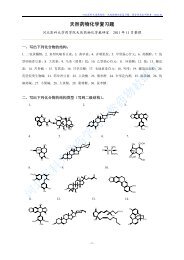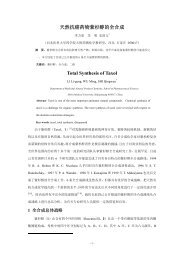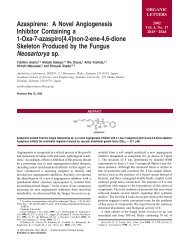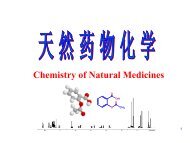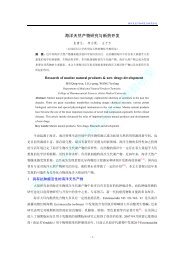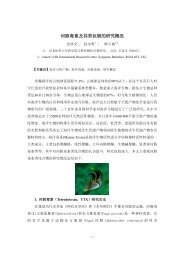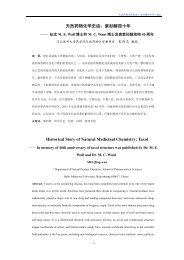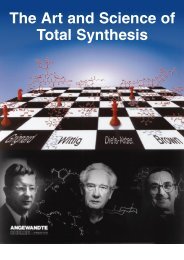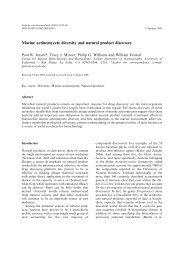Total Synthesis Highlights
Total Synthesis Highlights
Total Synthesis Highlights
You also want an ePaper? Increase the reach of your titles
YUMPU automatically turns print PDFs into web optimized ePapers that Google loves.
The other half of 1 was prepared from the acetal 7. Lateral metalation followed by acylation with<br />
the Weinreb amide 8 gave the ketone 9. Displacement with azide followed by exposure to acid<br />
gave the bridged acetal 10, which was condensed reductively with 6 to give the oxidopyridinium<br />
betaine 12.<br />
Two products, 13 and 14, could arise from the dipolar cycloaddition of 12. It was not clear at the<br />
outset which would be preferred. In the event, it did not matter. Even though the thermal<br />
equilbrium favored the undesired 13, equilibration was efficient, and the two were easily<br />
separated.<br />
With 14 in hand, the stage was set for the intramolecular Diels-Alder cyclization. In fact, the diene<br />
1 was not isolated. The evidence for the intermediacy of 1 was the observation that on exposure to<br />
pyrollidine in methanol at 60°C, the Birch reduction product 17 smoothly cyclized to 2.<br />
Methylenation followed by kinetic, axial-selective SeO 2 oxidation then completed the synthesis of<br />
3.<br />
The concise elegance of this 17-step synthesis of the heptacyclic hetesine alkaloid nominine 3 is<br />
all the more apparent when it is compared with the only previously-reported synthesis, published<br />
just two years earlier, which took 40 steps



